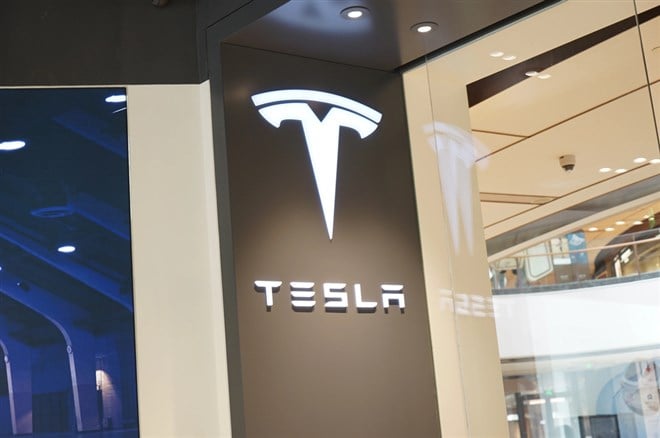Ticker Reports for December 10th
Amazon's Healthcare Gamble: A New Era of Medical Disruption
Amazon (NASDAQ: AMZN) has recently started exploring more opportunities in the healthcare sector. This significant strategic shift for the e-commerce giant has the potential to reshape the industry and significantly impact Amazon’s financial trajectory. The high-profile acquisition of One Medical and the integration of Amazon Clinic into its services aim to deliver affordable, accessible, and efficient medical care to the masses. This new healthcare sector business model has the potential to disrupt traditional healthcare models and drive substantial growth for Amazon. However, the latest venture into this highly regulated sector also presents notable challenges and risks for Amazon and its investors.
A Multi-Faceted Approach to Healthcare Domination
Amazon's healthcare strategy is a carefully orchestrated multi-pronged approach that leverages its existing infrastructure and technological capabilities. The strategy centers on three key pillars: telehealth services, pharmacy operations, and the integration of artificial intelligence (AI). Amazon One Medical Pay-per-visit, the rebranded virtual healthcare platform previously known as Amazon Clinic, is central to its telehealth strategy.
This platform provides convenient, virtual consultations for over 30 common health conditions, ranging from minor ailments such as pink eye and the flu to more complex issues. This service is further enhanced by integration with Amazon Pharmacy, which allows for seamless prescription fulfillment and, in several major cities, same-day medication delivery. This combined offering utilizes Amazon's established logistics infrastructure to ensure swift, reliable, and cost-effective medication delivery to consumers' doorsteps.
Supplementing these consumer-facing services is Amazon's strategic use of AI. AI algorithms play a critical role in streamlining administrative tasks for One Medical physician. By automating medical record processing and information retrieval, Amazon aims to alleviate the administrative burden on healthcare professionals, thereby reducing "pajama time," which is the often substantial time physicians dedicate to administrative tasks outside of clinic hours.
Further AI development within Amazon One Medical focuses on advanced care coordination, enabling more personalized patient care plans by providing healthcare professionals with instant access to comprehensive information regarding their patients' medical history and care needs. However, the integration of AI also presents challenges related to ensuring data privacy and mitigating any potential biases embedded in the algorithms.
Disrupting the Status Quo: Amazon's Competitive Edge
Amazon's entry into healthcare immediately positions it as a formidable competitor to existing telehealth and direct-to-consumer healthcare companies. The company leverages several competitive advantages: an extensive and loyal customer base built upon its Prime membership program, an already highly developed logistical infrastructure capable of delivering products and services across the country, and the technological expertise to develop and deploy advanced AI solutions. This allows Amazon to offer a superior consumer experience with its transparent, fixed-price telehealth consultations, often at significantly reduced costs compared to traditional healthcare providers.
The integration of Amazon Pharmacy for medication fulfillment further enhances convenience, eliminating the need for separate pharmacy visits. Evidence of Amazon's disruptive potential is already apparent in the market reaction to its announcements, such as the 20% drop in Hims & Hers' (NYSE: HIMS) stock price following the launch of the fixed-price telehealth plan.
Financial Projections: A Billion-Dollar Bet
While Amazon has not released detailed financial projections for its healthcare segment, the potential for significant financial growth is evident. Revenue streams will encompass consultation fees from telehealth visits, prescription medication sales through Amazon Pharmacy, and potential future opportunities in adjacent areas.
The cost efficiencies gained from AI-driven automation should improve profitability margins. Furthermore, the convenience and affordability offered by Amazon's healthcare services are expected to attract new Prime members, enhancing the value proposition of its flagship membership program. Considering that Amazon's total Q3 FY2024 revenue exceeded $158 billion, with operating income exceeding $17 billion, the healthcare division’s potential for contribution to this growth is substantial.
Investment Implications: A Calculated Risk
Despite the apparent potential, Amazon's venture into healthcare will be challenging. The healthcare industry is heavily regulated, and navigating the complex regulatory landscape will be critical to success. Furthermore, building trust with patients and healthcare providers requires a careful and cautious approach, especially concerning data privacy and security. Competition from established players in the telehealth and pharmacy sectors will be intense, necessitating continuous innovation and differentiation.
Amazon's expansion into healthcare presents a compelling investment proposition, balancing high-growth potential with significant inherent challenges. The company’s established infrastructure, brand recognition, and technological capabilities provide a substantial competitive edge. Investors must cautiously weigh the risks of the potential for regulatory hurdles, competitive pressure, and the risks associated with AI implementation. Amazon’s proven ability to successfully enter and disrupt diverse markets suggests that its healthcare gamble could pay off handsomely. Thorough due diligence, however, remains paramount for any investor considering incorporating Amazon into their portfolio based on its healthcare strategy alone.
Crypto's Hidden Gem: The missing piece no one's talking about
You don't actually want to buy Bitcoin this time around.
That's because there's a better way to take advantage of this new bull market…
One market expert calls it Crypto's Hidden Gem
And it's a new way that has given folks like you and me the chance to see bigger and faster moves than the traditional way of buying Bitcoin…
That means if you've stayed away from Bitcoin and crypto because it's confusing or seems risky…
This is a much safer and better approach to ride this years' crypto bull run.
Because believe it or not…
The 2024 crypto bull run is one you DON'T want to miss.
Semiconductor Giant Synopsys Slides 14% — Time to Take Notice
Indisputably, one of the most important companies in the world of semiconductors is Synopsys (NASDAQ: SNPS). The company has established an ironclad position as one of the key providers of semiconductor design software. However, the technology company’s share price has stagnated in 2024, providing a total return of -1% as of the Dec. 9 close. A significant contributor is the nearly 14% drop in value the firm has experienced since the Dec. 4 market close.
Is now the perfect time to invest in Synopsys as it strives to improve its performance in 2025? It’s a fair question, especially given recent shifts in Wall Street price targets. Let’s take a quick look at the company’s background, its role in the industry, and whether Synopsys is poised for a turnaround.
Synopsys: A Foundational Player in the Chip Market
Synopsys is the number one provider of electronic design automation (EDA) software in the semiconductor industry. Without the latest EDA software, it is impossible to design the world's most advanced chips. Chip designers can use older versions of the software to design less advanced chips, which is why China’s chips are less advanced than the United States'. The U.S. government has limited the sale of advanced chip development software to Chinese firms.
Wall Street Raises Expectations Overall Despite Double-Digit Share Price Drop
Synopsys's slight earnings beats in 2024 have left the market lukewarm. The company beat slightly on its Q4 earnings, but it was the full-year 2025 guidance that sent shares tumbling. The company’s sales projection was 1% lower than Wall Street expected. Increased trade restrictions placed on China, where Synopsys generated 15% of its revenue in 2023, contributed to this. However, adjusted earnings did fall solidly within the expected range. The extent to which Synopsys sees the second half of 2025 as being better than the first half also clashed with Wall Street views.
Curiously, after the earnings release, some Wall Street analysts raised their price targets. Others lowered or reiterated them. Overall, of six analysts who issued an update, their average price target actually slightly increased. That’s vastly different from the nearly 14% decline in share price seen since the release. The average of these six price targets implies a 28% upside in the share price.
Short and Long-Term Case for Synopsys
Synopsys remains essential to the future of the semiconductor market. Chip design companies continue to be in the race of innovation to stay ahead or catch up with their competitors. That is true for chips used in cloud AI workloads and for AI accelerator chips in endpoint devices. Synopsys’s software is important to both these markets, as well as the auto and industrial markets. Synopsys continually invests to stay at the forefront of all markets it can serve. Its research and development spending as a percentage of revenues has been above 30% every quarter for the past ten years. Last quarter, the figure was 34%.
The company’s dedication to investment is further demonstrated through its $35 billion acquisition of ANSYS. It hopes to close this deal in the first half of 2025. The purpose of the acquisition is to better optimize all components of a data center beyond simply silicon on an advanced chip. Companies need to optimize networking, storage, and cooling in a data center to create the best performance for the best price.
The ANSYS acquisition aims to increase Synopsys's capabilities in this optimization type, which optimizes all components in a system and extends to other areas like vehicles and robots. The company’s foundational place at the beginning of the semiconductor and electronics value chain provides it with strong long-term tailwinds to take advantage of technological innovation.
The recent drop in Synopsys’s stock price looks like a solid opportunity to cautiously take advantage of this long-term outlook. The operative word is "cautiously," as Synopsys is still by no means a cheap stock. The 34x forward price-to-earnings (P/E) ratio is high compared to the 23x figure of the S&P 500. However, the forward P/E looks more favorable when compared to Synopsys’s average level over the past three years, which is 38x. How Synopsys navigates the increasing difficulty of doing business in China and the progression of the ANSYS acquisition are key factors to watch.
New Year, New Opportunity! 2 AI Stocks Under $10 Ready to Soar
As we step into 2025, artificial intelligence (AI) stocks continue to dominate headlines, and now is the perfect moment to position yourself for the coming year's potential.
Our latest research has uncovered two must-buy AI stocks currently trading under $10/share – an affordable entry with promising growth potential. These stocks are flying under the radar, but it's only a matter of time before they gain mainstream attention.
Tesla's Closes in on $400: From Laggard to Leader in 2024
Tesla (NASDAQ: TSLA) is closing in on the pivotal $400 mark, capping off a year of dramatic highs and lows. Earlier in 2024, Tesla shares were among the worst-performing S&P 500 stocks, down nearly 40% at their lowest point. However, the electric vehicle giant has experienced a remarkable reversal, now ranking as the 45th best-performing stock in the index on the year. Year-to-date, Tesla shares have climbed 57%, fueled by a 72% gain this quarter and a staggering 180% surge from their 52-week low. This comeback highlights Tesla’s ability to navigate challenges and regain investor confidence.
Early Struggles Set the Stage for a Comeback
Tesla faced significant obstacles earlier in the year. CEO Elon Musk announced a 10% global workforce reduction, aiming to enhance efficiency and control costs. This move, coupled with Tesla’s first annual delivery decline since 2020, highlighted the operational pressures on the company. Q1 deliveries were down 8.5% year-over-year, and production fell 12.5% sequentially. Additionally, the company dealt with the controversy surrounding Musk’s $56 billion pay package, which faced shareholder scrutiny and regulatory challenges.
Despite these setbacks, the tech giant found support at key technical levels. After reclaiming its 200-day SMA and the $200 support level, the stage was set for a turnaround. Anticipation grew as the market awaited Tesla’s Q3 earnings report, which ultimately catalyzed the stock’s resurgence.
Q3 Earnings Drive Optimism and Momentum
Tesla’s Q3 2024 earnings report delivered mixed results but underscored resilience and efficiency. Revenue fell slightly below expectations at $25.18 billion, up 8% year-over-year. However, earnings per share (EPS) of $0.72 beat analyst forecasts, showcasing operational strength. Key highlights included record-low costs per vehicle of $35,100 and a robust operating margin of 10.8%, reflecting the company’s ongoing cost-control efforts.
Operational achievements further bolstered investor confidence. Tesla delivered 462,890 vehicles in Q3, a 6.4% year-over-year increase, while ramping up production of the highly anticipated Cybertruck. The company also celebrated the production of its seven millionth vehicle and expanded its Supercharger network by 20%. Notably, Tesla’s energy storage business grew 75% year-over-year, adding another layer to its growth narrative. Tesla also reaffirmed its vision for a sub-$30,000 EV, a move aimed at capturing a broader market segment and challenging competitors like BYD and Volkswagen.
Analyst Upgrades Signal Optimism as Tesla Nears $400
As Tesla approaches its all-time high near $415, analysts have grown increasingly optimistic. Bank of America recently raised its price target to $400, citing Tesla’s robotics and artificial intelligence advancements as key long-term growth drivers. Stifel Nicolaus also boosted its target, setting a street-high estimate of $411 on December 2. These upgrades come on the heels of Tesla’s announcement of the Model Q, an affordable EV aimed at dominating the Chinese market.
The company’s consensus price target has risen nearly 20% over the past three months, from $209 to $248. While this still implies a potential downside, the momentum in revised price targets suggests that analysts may continue adjusting their outlooks as Tesla demonstrates sustained progress.
Looking Ahead
With Tesla shares surging and analyst sentiment improving, the company is poised to finish 2024 on a strong note. The stock’s recovery from one of the S&P 500’s worst performers to a leading name exemplifies its resilience and ability to innovate. As Tesla continues to expand its product lineup, streamline operations, and invest in groundbreaking technologies, the optimism surrounding its future trajectory remains well-founded. Whether Tesla will break through the $400 level and approach its all-time high remains a key focus for investors in the weeks ahead.






0 Response to "🌟 Amazon’s Healthcare Gamble: A New Era of Medical Disruption"
Post a Comment